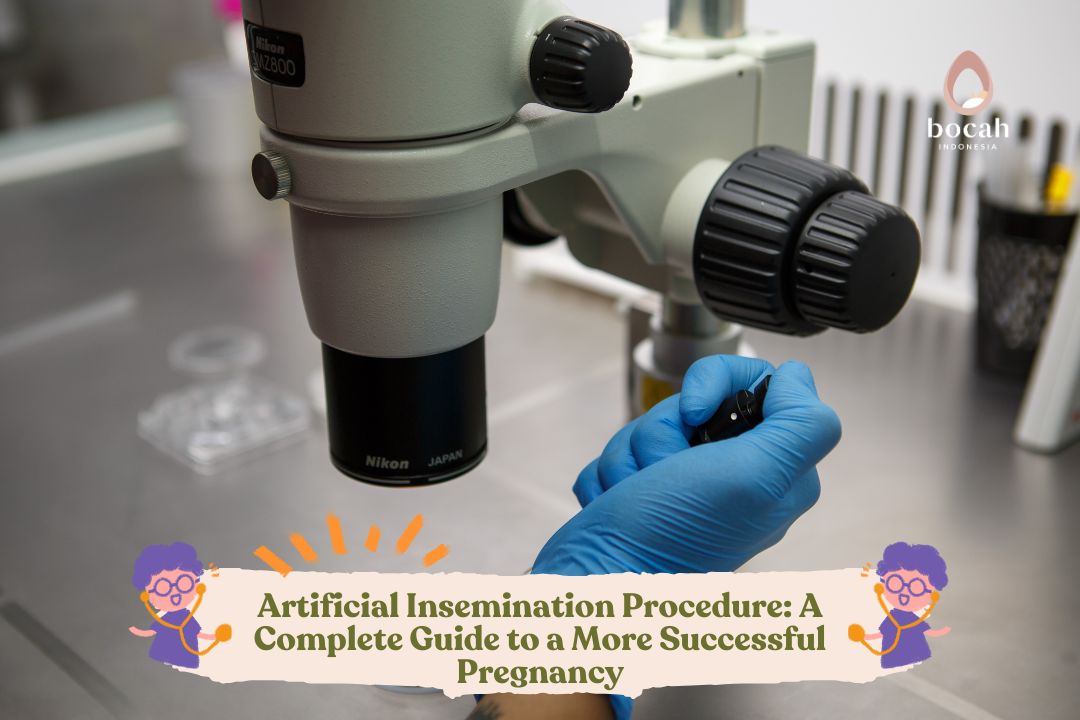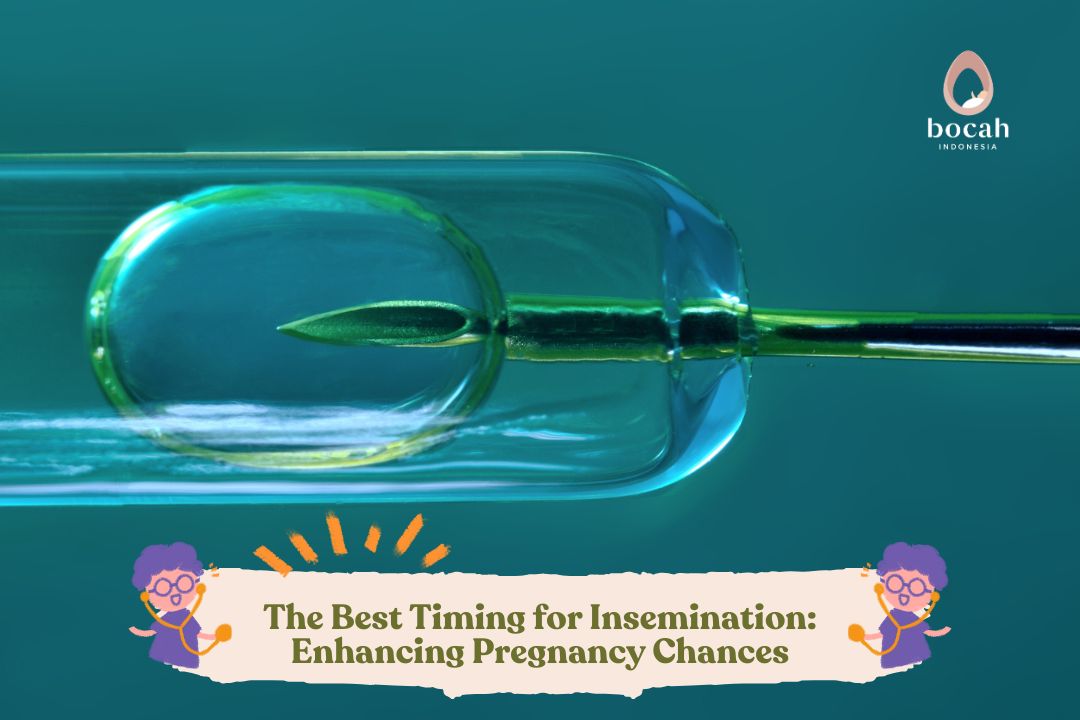Complete Guide to Artificial Insemination for Parents: Procedure, Purpose, and Success

There are many fertility pregnant programs that parents can try, and one of them is artificial insemination. Learn about artificial insemination in this guide.
Artificial insemination, also commonly referred to as artificial insemination, is a method that can help parents facing fertility issues. One of the most popular techniques is Intrauterine Insemination (IUI).
In IUI, sperm is inserted directly into the uterus to facilitate the fertilization process. To ensure the procedure runs smoothly and to increase the chances of pregnancy, here are some important guidelines that parents should pay attention to.
Purpose of Artificial Insemination
Artificial insemination is a method used to assist parents who are experiencing fertility problems. Its main goal is to facilitate the meeting of sperm and eggs, thereby increasing the chances of fertilization and pregnancy. Below are some specific purposes of artificial insemination:
- Increase the chances of fertilization
Artificial insemination aims to increase the likelihood of fertilization by injecting sperm directly into the uterus or an area closer to the egg. This helps sperm avoid various obstacles that may be present on their way to the egg. - Overcome fertility issues
This method is often used to address fertility problems in fathers, such as low sperm count (oligospermia), reduced sperm motility, or ejaculation disorders. It is also beneficial for mothers with mild cervical issues, mild endometriosis, or ovulation disorders. - Facilitate the pregnancy process
By inserting the father’s sperm directly into the mother’s uterus, this procedure shortens the distance the sperm must travel to reach the egg, which can help parents who have difficulty achieving pregnancy naturally.
Procedure for Artificial Insemination
The artificial insemination procedure, particularly Intrauterine Insemination (IUI), involves several important steps:
Tanya Mincah tentang Promil?
- Preparation and examination
Before the procedure, parents will undergo a series of tests to ensure that this method is the right choice. This includes fertility tests for the father (such as sperm analysis) and health checks for the mother. - Sperm preparation
Sperm collected from the father will be processed in the laboratory to improve its quality. This process involves separating healthy sperm from other components in the sample to achieve optimal sperm concentration. - Timing
Timing is key in artificial insemination. The procedure is typically performed around the mother’s ovulation time to increase the likelihood of the sperm meeting the egg. The doctor will monitor the mother’s ovulation cycle using methods such as hormone monitoring or ultrasound. - Insemination procedure
During the IUI procedure, the processed sperm will be inserted directly into the uterus using a thin catheter that is passed through the vagina and cervix. This process usually causes no pain and only takes a few minutes. - Recovery and aftercare
After the procedure, the mother can return to normal activities. While she may experience mild cramps or spotting, these are common and nothing to worry about. The doctor will provide guidance on post-procedure care and signs to watch for.
A few days to weeks after the procedure, the doctor may ask the mother to take a pregnancy test to see if the artificial insemination was successful. If the result is negative, the procedure can be repeated in the following cycle with the doctor’s recommended time interval.
After the procedure, the mother may experience symptoms such as vaginal discharge, mild cramps, bloating, or breast tenderness. Don’t worry, these are normal and no hospitalization is needed. The mother can continue her daily activities as usual without any issues.
Frequency and Risks of Insemination
To get the best results from artificial insemination, it is typically performed in 3–6 cycles with an interval of 3–6 months between each cycle. This helps increase the chances of pregnancy. In addition to IUI, other methods such as intracervical or intratubal insemination may be considered if IUI is not successful.
During this process, the mother may be given Controlled Ovarian Hyperstimulation (COH) therapy to maximize egg production. However, this therapy can increase risks such as multiple pregnancies or ovarian hyperstimulation syndrome (OHSS). Therefore, it is important to closely monitor the mother’s condition and follow the doctor’s instructions.
Success Factors
The success of artificial insemination is influenced by several factors. It is recommended that the mother’s age be below 35 for better outcomes. The frequency of the procedure also matters; performing insemination every month can increase the chances by up to 20% per cycle.
The quality of the semen sample, proper timing, and the use of fertility drugs also play a significant role. Additionally, ensuring that the fallopian tubes and eggs are in good condition increases the likelihood of the procedure’s success.
However, this method is not recommended for mothers over the age of 40, or mothers with severe fallopian tube issues, pelvic infections, or severe endometriosis. If the father experiences severe infertility, in vitro fertilization (IVF) may be a more suitable option.
Artificial insemination is a proven effective method to help couples experiencing difficulties in achieving pregnancy naturally. By following the correct procedure and the doctor’s guidance, parents can increase their chances of achieving the desired pregnancy.
Source:
- Cai, H., et al. (2022). Efficacy of Intrauterine Insemination in Women with Endometrioma-Associated Subfertility: Analysis Using Propensity Score Matching. BMC Pregnancy and Childbirth, 22(1), pp. 12.
- Chiu, Y. H., et al. (2022). Effectiveness and Safety of Intrauterine Insemination vs. Assisted Reproductive Technology: Emulating a Target Trial Using an Observational Database of Administrative Claims. Fertility and Sterility, 117(5), pp. 981–991.
- Wang, X., et al. (2021). Factors Affecting Artificial Insemination Pregnancy Outcome. International Journal of General Medicine, 14, pp. 3961–3969.
- National Health Service UK (2023). Health A to Z. Intrauterine insemination (IUI).
- Nall, R. Healthline (2023). Everything You Need to Know About Artificial Insemination.
- Lindberg, S. Healthline (2021). Signs Your Embryo Transfer May Have Been Successful.
- WebMD (2021). Infertility and Artificial Insemination.










